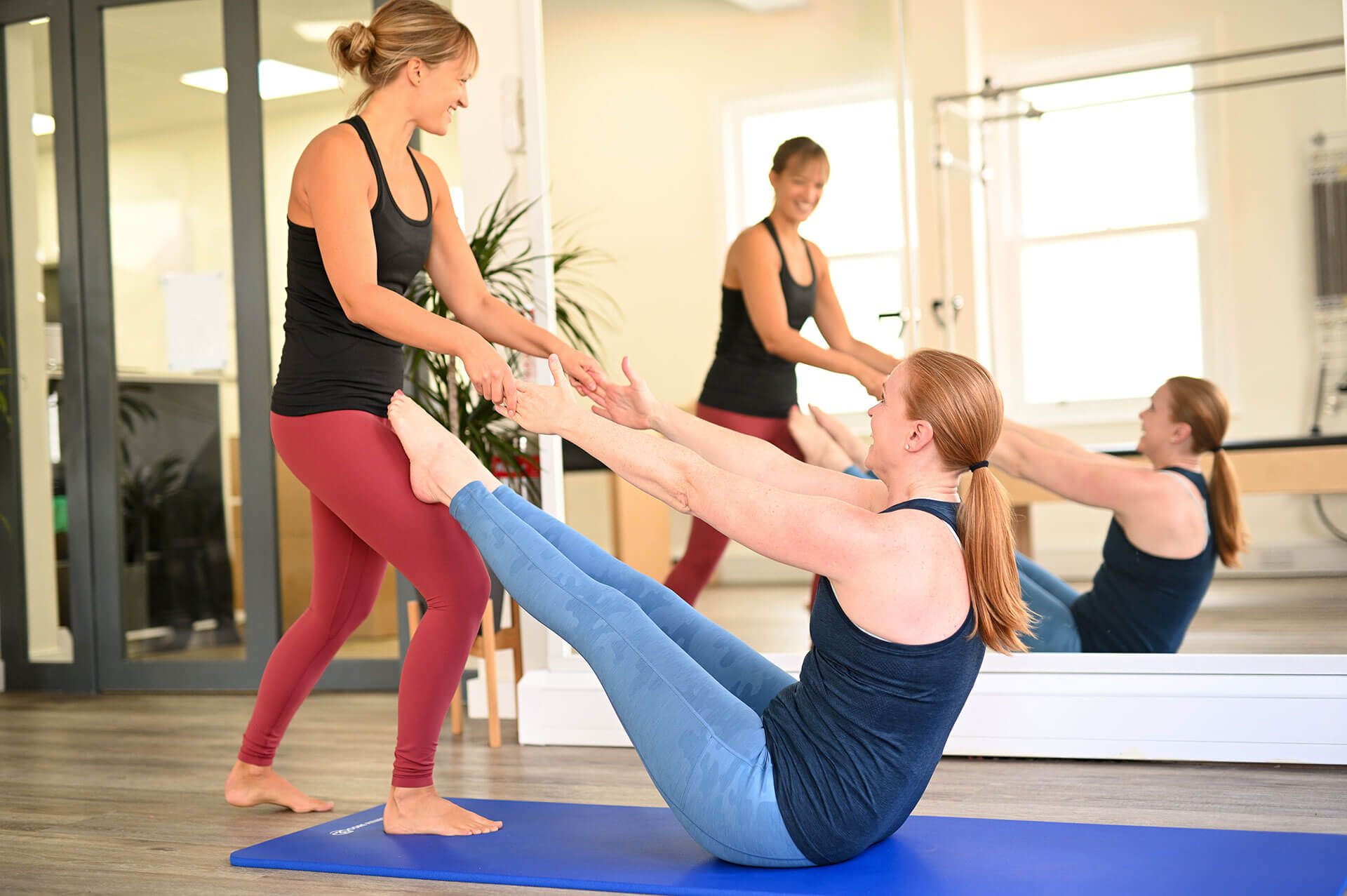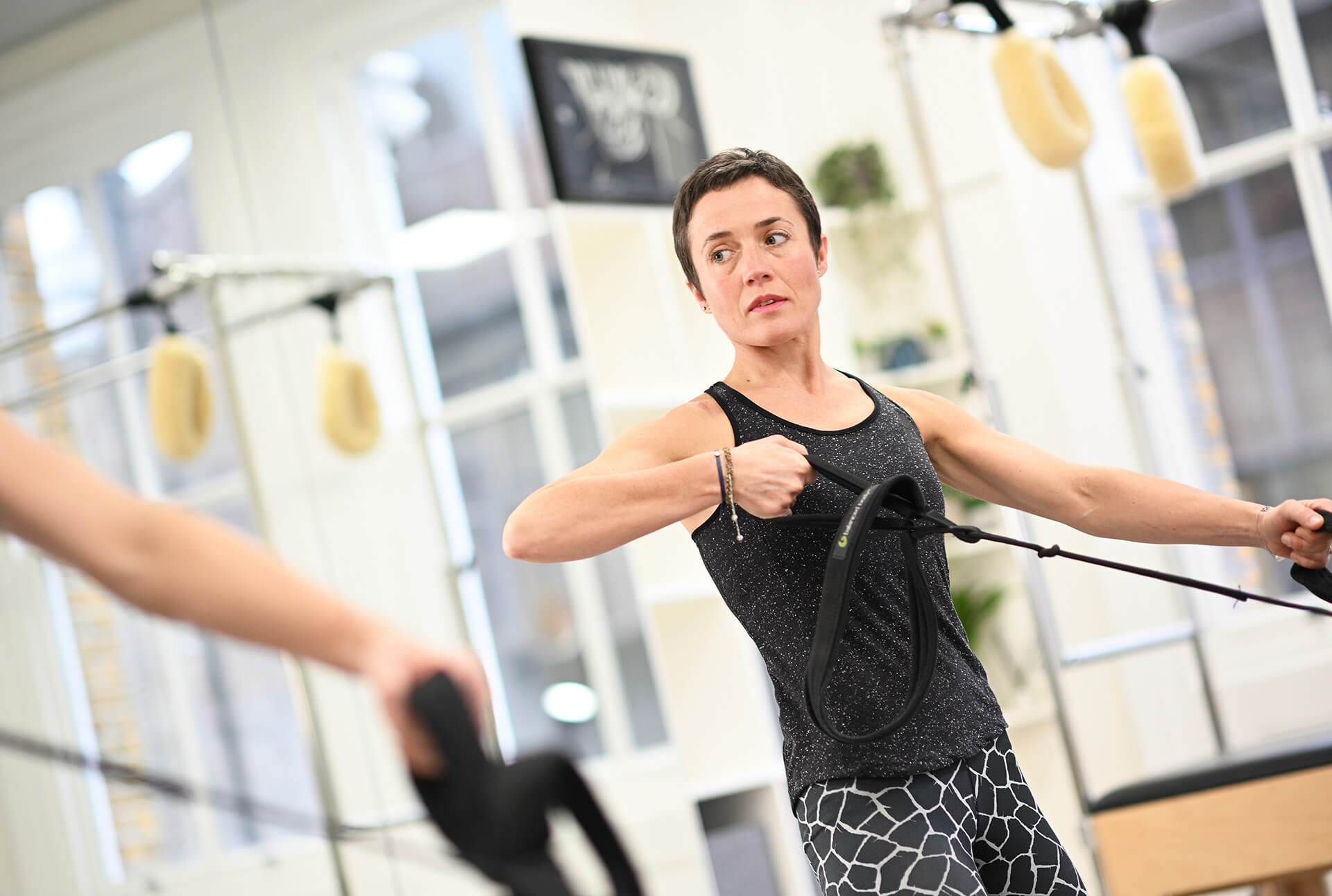January is cervical cancer awareness month. We would like to tell you about cancer rehab for cervical cancer in the form of physiotherapy, exercise, and Pilates. Exercise has a significant role in the prevention of cancer, treatment of cancer, and recovery after treatment.
Cervical cancer
Cervical cancer is when abnormal cells grow in the lining of the opening to the womb from the vagina, this is the cervix. It is one of the cancers that affects the female reproductive system. In the UK there are around 8 people diagnosed with cervical cancer every day, it is the 14th most common cancer in women in the UK. It is more common in younger women and more than half the diagnoses each year are in women under the age of 45.
Nearly all cases of cervical cancer are caused by high-risk Human Papilloma Virus (HPV). In the UK all girls age 12 or 13 are routinely offered the HPV vaccine which protects against the types of HPV most likely to cause cervical cancer. These offer excellent prevention of cervical cancer but do not protect 100% so the cervical smear test used for screening the cells of the cervix is also important.
Cervical screening is offered on the NHS to all women aged 25 to 64. Cervical screening picks up any changes in the cells of the cervix that could potentially develop into cancer if left untreated. It is a vital part of preventing cervical cancer. You should be offered a cervical screening (smear test) every 3-5 years. Cells are collected from your cervix and sent to the laboratory to be tested for HPV and cell changes. This is done by opening your vagina using a speculum which is plastic or metal so that the nurse can insert a soft brush to take cells from the cervix at the top of your vagina. It is usually painless but can feel uncomfortable. If you have any concerns about having your smear test please do speak to your GP, it is vital to check for changes as early treatment is the most effective treatment!
Exercise to prevent cancer
Exercise has been shown as beneficial in helping to prevent many different cancers. In cervical cancer research has shown that even just 30 minutes per week of exercise has the potential to significantly reduce a woman’s risk of developing cervical cancer.

If you take part in physical activity or exercise more than 4 times per month you are significantly less likely to develop cervical cancer. This is still true when considering other risk factors such as smoking, alcohol intake and family history of cancer.
Put differently, women who do not take part in regular physical activity are 2.5 times more likely to develop cervical cancer.
If you are diagnosed with cervical cancer, taking part in regular physical activity reduces your risk of dying of the disease by 37%.
These numbers show that there is a powerful message that even small amounts of exercise such as 30 minutes per week can reduce your risk of cervical cancer. If you link that in with smoking cessation and reducing alcohol intake you will make an even bigger impact. These things have been shown to go together and support each other so if you seek support for increasing exercise you are more likely to stop smoking and reduce alcohol as well.
Cervical cancer treatment
Treatment for cervical cancer is individual to each patient depending on the type, stage and spread of the disease. Treatment can include surgery, which may be just the cervix or can include removal of other reproductive organs such as the uterus (hysterectomy) or to further organs in the pelvis depending on the spread of the disease.
Treatment can also include chemotherapy and radiotherapy which can be both pre and post-operative. The side effects of these treatments and of the surgery can significantly affect quality of life. Exercise and cancer rehab can have a profound positive effect on patient’s quality of life by managing these side effects of treatment.
Benefits of cancer rehab during treatment for cervical cancer

There are many incredible benefits of exercising and taking part in cancer rehab with a trained clinician during cancer treatment.
- Increase the efficacy of cancer treatment. Exercise has been shown to aid at a cellular level to make the chemotherapy you receive more effective.
- Help to combat fatigue. Even when you may not be feeling like exercising due to fatigue from cancer treatment, doing the right things at the right times reduces the levels of fatigue and the negative effect it can have on daily life.
- Maintaining cardio-vascular fitness, this is vital to maintain during treatment and exercise can help.
- Maintain muscle strength. Many people find that cancer treatment causes them to become deconditioned which makes every-day life harder and return to activity after treatment harder. Exercise helps to maintain muscle strength.
- Reduce the risk of lymphoedema, if the lymphatic system is involved in your cancer, exercise can help to reduce the risk of developing lymphoedema in your legs.
- Relaxation, not all exercise has to be high level and high impact, some movement of the body can help with relaxation and sleeping. We know that sleeping is vital for recovery and exercise can help.
- Mental health, there are well known mental health benefits of exercise for all people and that is the same for those having treatment for cancer.
- Maintaining routines and your sense of self. If you are someone who normally exercises it can be devastating to suddenly stop and be in treatment. Keeping a routine of exercise even if it looks different to before your diagnosis can help you physically and psychologically.
Benefits of exercise and cancer rehab after treatment.
When you are diagnosed with cancer it is hard to see past the initial surgery or treatment. The focus is often on the surgery, removal of the cancer, and the curative effects of chemo or radio therapy. This can sometimes mean that after that has happened and you are clear of the cancer you don’t necessarily have the guidance or support you may need to return to your normal life.
Women can often have ongoing side effects of treatment for years afterwards and this is where cancer rehab can help. Working with a specialised cancer rehab clinician can help to return you to a full life and ensure you achieve your goals.
One of the main roles of a cancer rehab therapist is to educate. If you understand the changes in your body and potential ongoing side effects then you will be able to work on overcoming them and returning to full fitness.
After surgery for cervical cancer women can have ongoing issues with bladder or bowel control, pelvic floor muscle weakness, pelvic pain and reduced movement or pain from scarring. Physiotherapy and cancer rehab can help with all of these. Specialised pelvic health physios are experts in assessing and treating post op or post treatment pelvic floor weakness. They may work alongside a cancer rehab specialist physio to maximise the outcome of your treatment and achieve your goals.

We also know that exercise has a huge effect on cancer survival.
- Greater levels of exercise after cervical cancer reduce related death by 37%
- Exercise may reduce the risk of recurrence by up to 35%
- Exercise is the NUMBER ONE treatment for reducing the most common debilitating side effects of cancer treatment
Exercise can help significantly with all of these symptoms after cancer treatment;
- Fatigue
- Reduced self-esteem
- Depression
- Reduced bone mineral density
- Anxiety and body image issues
- Overall quality of life
- Lymphoedema
- Weight management
- Stress management
Cancer rehab physiotherapists have a multitude of treatment skills that can be used to reduce pain and increase movement and function. If you have any ongoing side effects of treatment you should seek out a cancer rehab physio or ask your GP for a referral. Pinc and Steel UK have a register of cancer rehab certified physiotherapists.
Related reading: Exercising during chemo
Pilates for cervical cancer rehab
Pilates is a perfect form of exercise in cervical cancer rehab. We can use the Pilates equipment to both assist and resist movement so that we can fully modify all the exercises depending on your stage of rehabilitation.
Our focus initially is on activating the deep core muscles which include the pelvic floor, deep abdominals, deep spinal muscles and the diaphragm. All of these can be affected in treatment for cervical cancer. Re-training of these deep foundation, or ‘core’ muscles is vital in returning the body to full function.
We can then progress you through your rehab, working on your body as a whole to achieve your goals. Pilates works both on the range of movement and the muscle strength to enable you to reach full function. We aim to give you your life back after cancer treatment and perhaps be stronger and fitter than ever before.
Summary
Cancer rehab for cervical cancer is effective and significantly reduces the risk of cancer, the risk of death and the risk of recurrence. Exercise is the most effective treatment reducing the most common side effects of treatment for cancer.
If you have any questions or would like to see our team of cancer rehab specialists please do not hesitate to get in touch.




